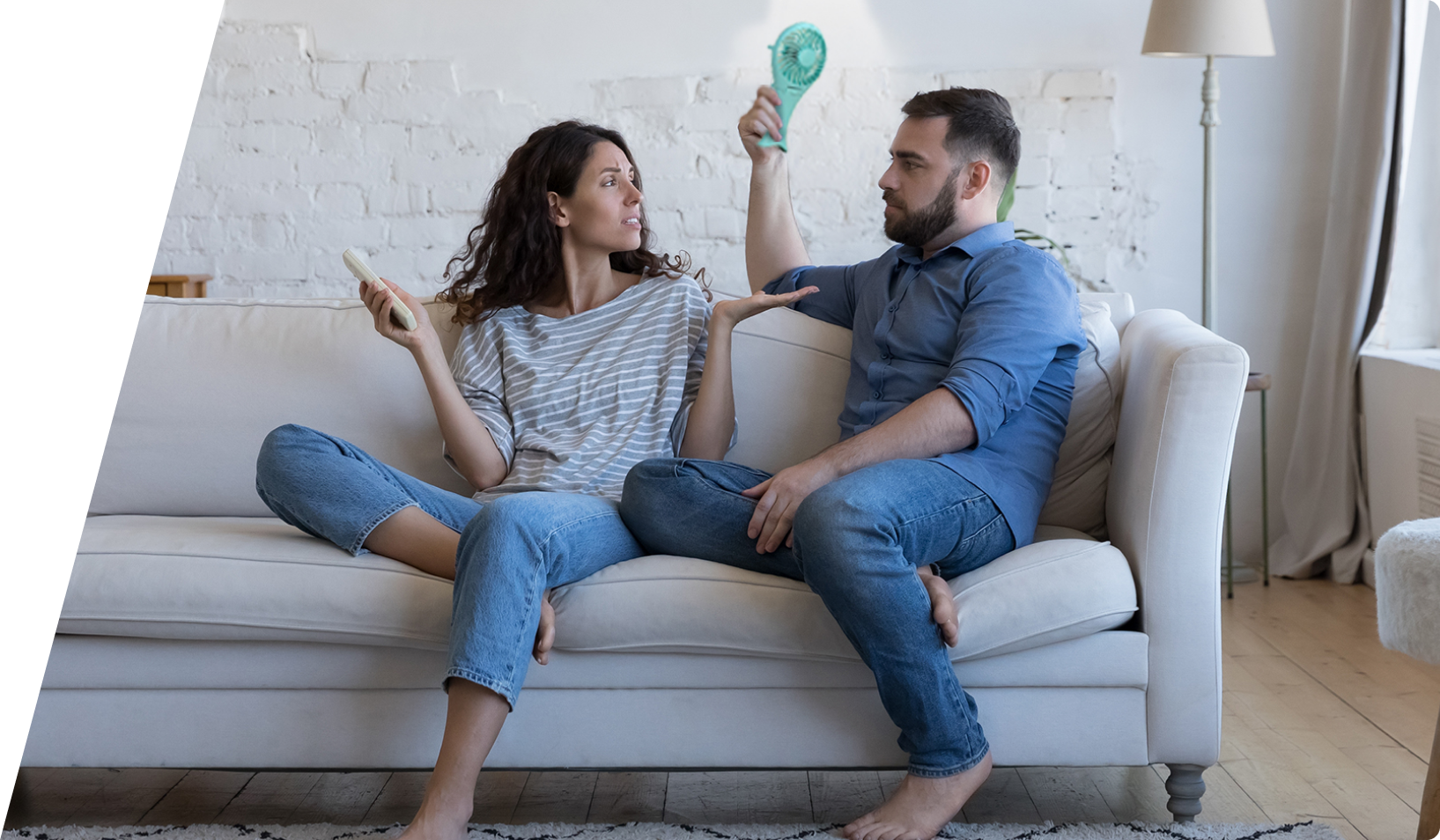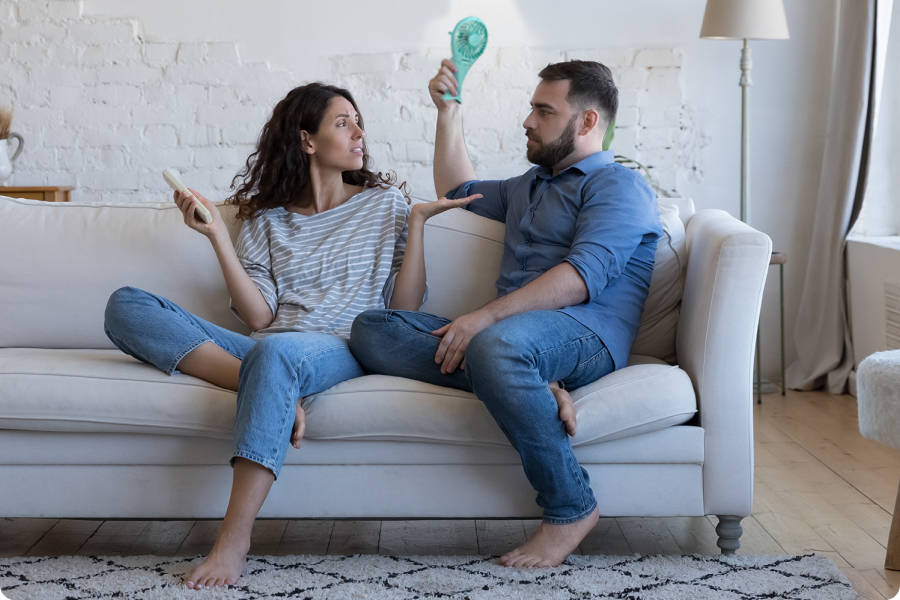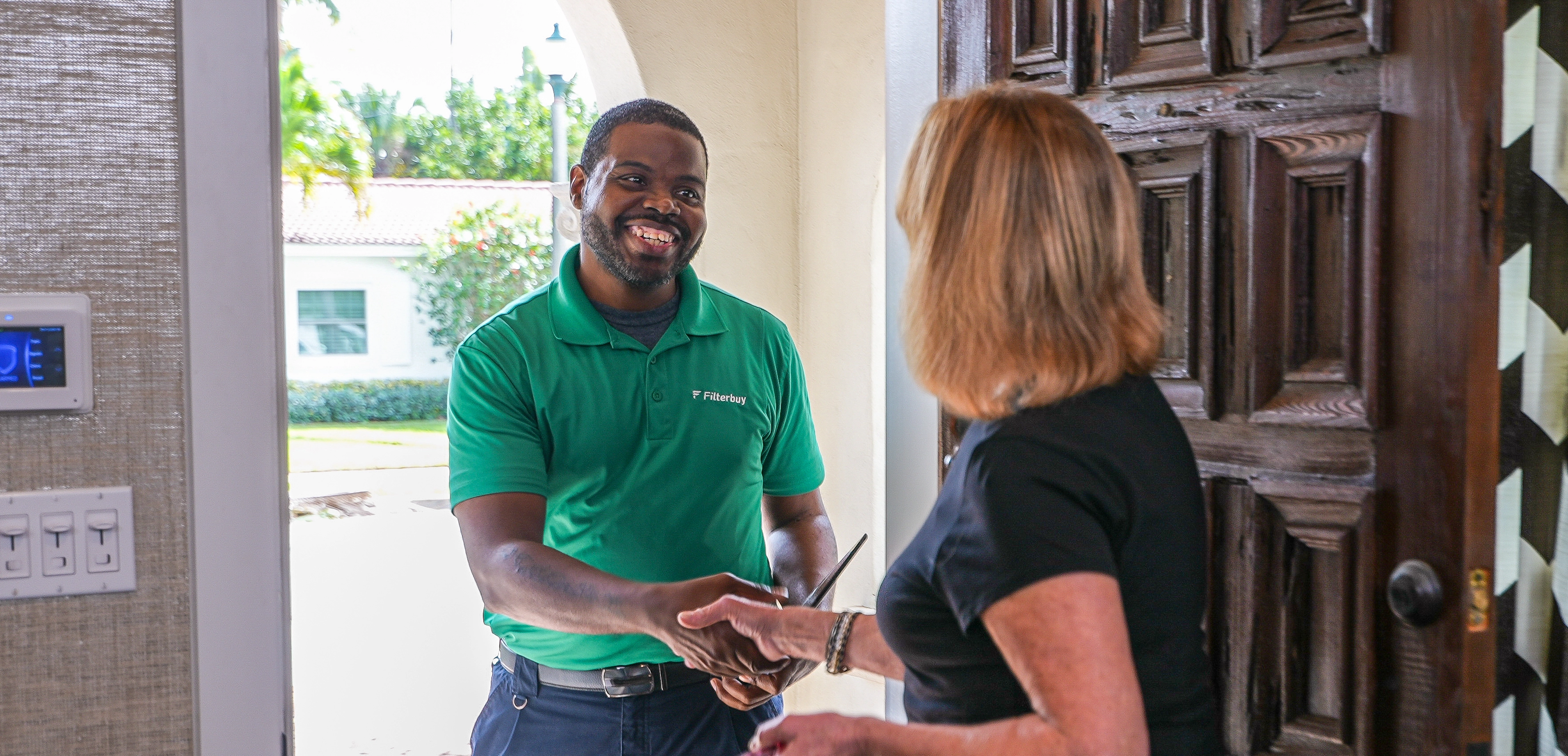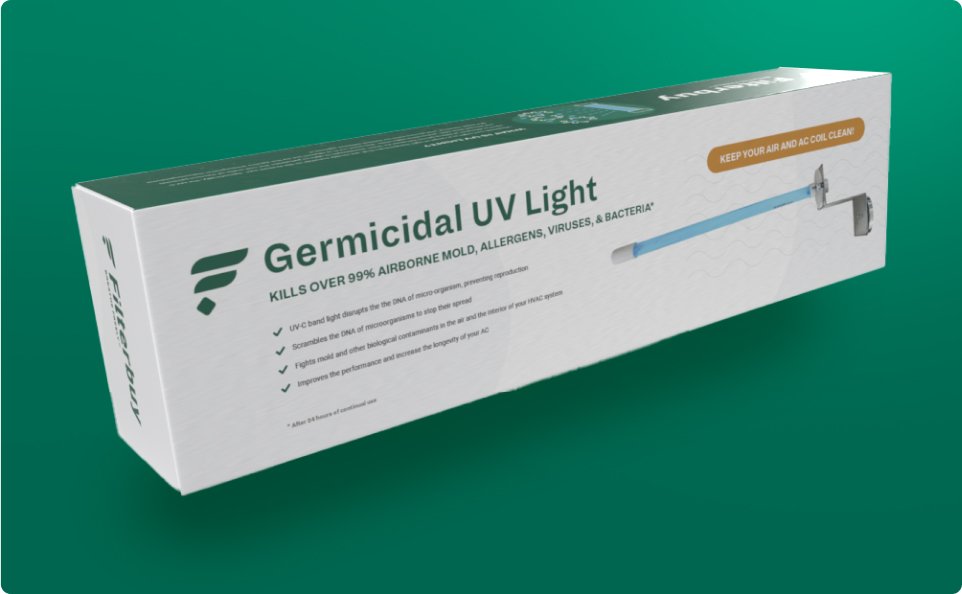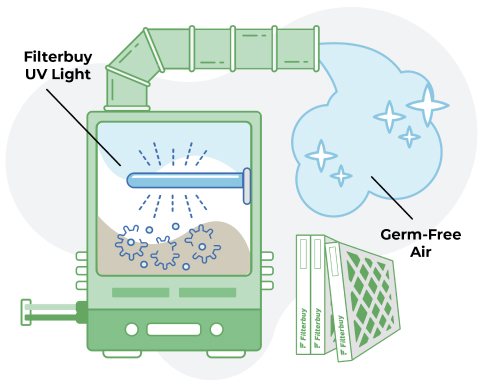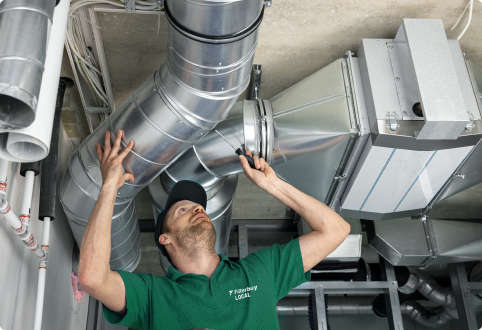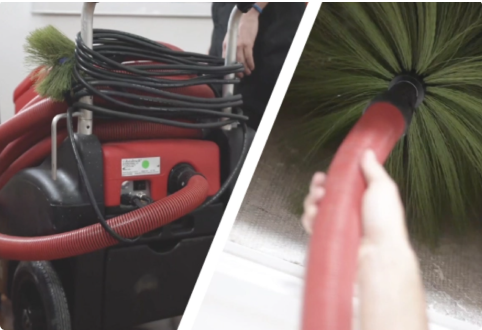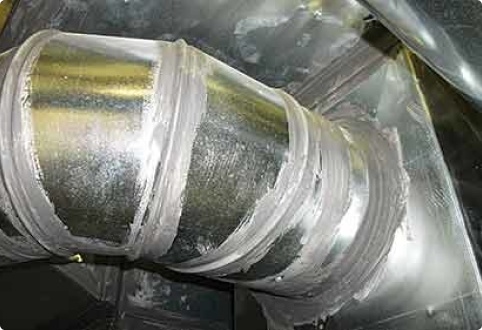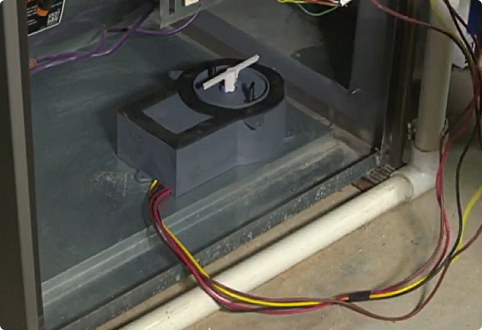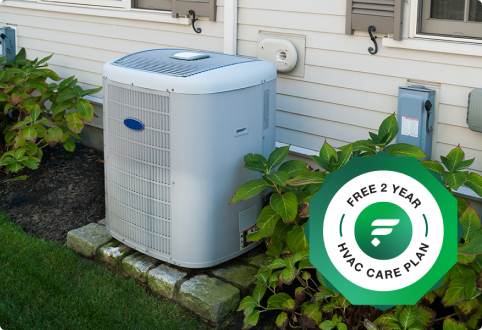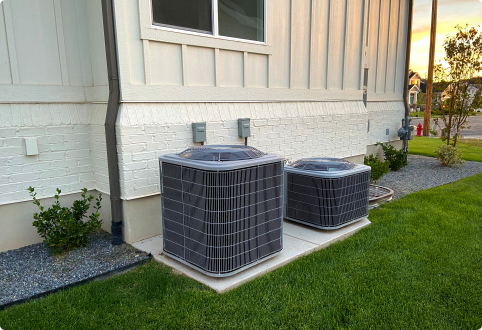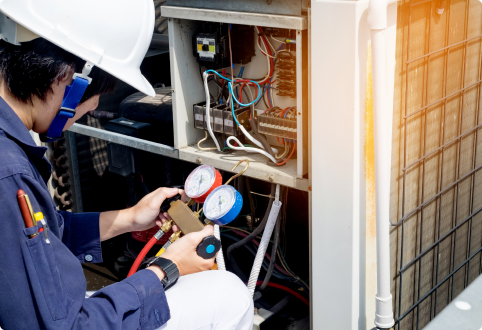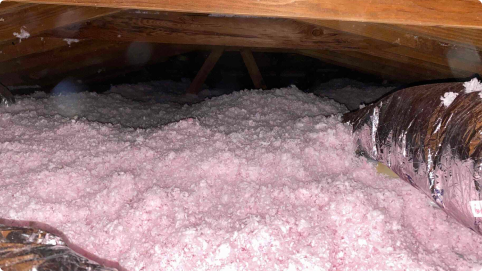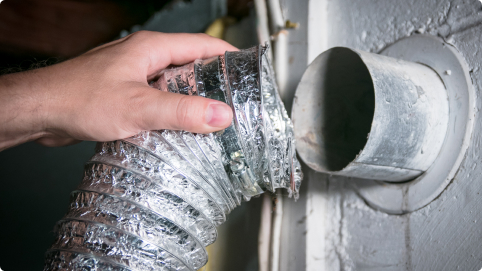Welcome to Filterbuy HVAC Solutions, the best HVAC UV light installation service company proudly serving in and near the greater Jensen Beach, FL area. Please let us know how we can help solve your Jensen Beach HVAC UV light installation needs with professional, affordable, and fast residential and commercial HVAC services by getting a free online quote or by giving our friendly HVAC specialists a call. We look forward to hearing from you!
HVAC UV Light Installation in Jensen Beach FL
Getting HVAC UV light installation in Jensen Beach, FL for your home and commercial property provides various benefits. This technology aims to sterilize air by neutralizing pathogens, molds, and bacteria, offering protection for your family and building occupants.
Aside from the immediate improvements in air quality, UV light helps with long-term health benefits and energy efficiencies for your Jensen Beach, FL home and office building. Selecting the right type of UV light and understanding its maintenance requirements raise important considerations.
This technology, primarily targeting the reduction of airborne pathogens and mold growth, promises significant health benefits, particularly in humid climates prone to allergens. However, the efficacy and safety of UV light installation depend heavily on proper implementation and regular maintenance. It is recommended to seek professional assistance when it comes to the installation of UV lights in your HVAC system.
Understanding HVAC UV Lights
HVAC UV lights, also known as ultraviolet germicidal irradiation (UVGI) systems, are designed to improve indoor air quality by eliminating harmful microorganisms and pathogens from the air circulating within HVAC systems. These systems utilize specific types of UV light to deactivate the DNA of bacteria, viruses, and other pathogens, preventing them from multiplying and causing disease. The primary UV light types used in HVAC systems include UV-C and UV-A. UV-C light is particularly effective against airborne pathogens and is commonly employed in HVAC UVGI systems due to its germicidal properties.
When evaluating the efficacy of HVAC UV lights, several efficiency metrics are crucial. The intensity of the UV light, measured in microwatts per square centimeter, directly impacts its germicidal effectiveness. Additionally, the exposure time, or the duration the air is exposed to UV light, plays a significant role in determining overall system performance. Proper installation and maintenance are vital to ensure that the UV light maintains optimal intensity and the HVAC system allows sufficient exposure time for the UV light to perform effectively. These efficiency metrics are essential for assessing the capability of UVGI systems to maintain high indoor air quality.
Benefits of UV Light Installation
Installing UV lights in HVAC systems offers significant benefits, including enhanced air quality and reduced spread of airborne diseases. By integrating ultraviolet light technology, residential and commercial spaces in Jensen Beach, FL can achieve a cleaner, healthier environment. This is particularly crucial in regions with high humidity and mold propensity.
UV light systems target and inactivate various pathogens and microorganisms that can circulate through air ducts. This includes bacteria, viruses, and mold spores, effectively decreasing the risk of respiratory infections and other health issues related to poor indoor air quality. Additionally, the use of UV lights in HVAC units contributes to allergen control by minimizing the presence of allergens that can trigger reactions such as asthma and hay fever.
Furthermore, another significant advantage of installing UV lights is the improvement in energy efficiency. By keeping the HVAC system clean from microbial growth, UV lights help maintain optimal airflow and heat exchange efficiency. This not only prolongs the lifespan of the HVAC system but also reduces energy consumption, leading to lower utility bills. Thus, the integration of UV technology in HVAC systems is not just about purifying air but also about enhancing overall system performance and cost-effectiveness.
Installation Process Explained
To ensure the successful integration of UV lights into an HVAC system, a detailed step-by-step installation process must be followed. Initially, the foremost step involves meticulous site preparation. This includes assessing the HVAC system to determine the best location for UV light placement, which is typically in the ductwork near the coils to maximize efficiency in treating the air as it passes through. Ensuring the area is clean and accessible is crucial to avoid any installation hindrances.
Next, tool selection plays a vital role. Essential tools for the installation include screwdrivers, drills, UV light kits, and safety gear such as gloves and protective eyewear. Before installation, it is important to disconnect the power to the HVAC system to ensure a safe working environment.
Following tool preparation and power disconnection, the UV light unit can be mounted. This involves securing the unit in the predetermined position and making sure it is firmly attached to avoid any movement. Wiring the UV light into the HVAC system is a critical step that should comply with manufacturer instructions to ensure optimal functionality and safety.
Once the unit is installed, reconnect the power and test the system to confirm that the UV light is functioning correctly. This comprehensive approach ensures that the UV light is integrated effectively into the HVAC system, enhancing air quality without compromising system performance.
Cost Analysis for Jensen Beach
Evaluating the financial implications of installing UV lights in an HVAC system is crucial for residents and businesses in Jensen Beach, FL. The cost of implementing this technology varies depending on several factors, including the size of the HVAC system, the specific UV system model chosen, and the complexity of the installation process. Additionally, the local climate's impact and possible incentives can play significant roles in the overall expense.
Key considerations include:
1. Initial Purchase Price: The upfront cost of UV lights can range from a few hundred to several thousand dollars, depending on system specifications.
2. Installation Costs: Professional installation is recommended, which adds to the total expense but ensures effectiveness and safety.
3. Local Incentives: Jensen Beach residents may be eligible for local government or utility rebates that help offset some costs.
4. Weather Impact: Frequent use due to the local hot and humid climate can lead to quicker degradation, potentially influencing long-term costs.
5. Electricity Usage: UV lights require electricity to operate, adding a modest amount to monthly energy bills.
Understanding these factors helps in making an informed decision about whether the benefits of UV light installation justify the investment for those living in Jensen Beach, FL.
Maintenance and Safety Tips
Regular maintenance and adherence to safety guidelines are paramount for the longevity and efficacy of UV lights in HVAC systems. To ensure optimal performance, it's crucial to regularly check and replace the filters in the system. This not only maintains air quality but also enhances the effectiveness of the UV lights. Filter compatibility is a significant factor, as the right filters can help prevent the accumulation of particles that may shield microorganisms from UV exposure, thereby ensuring the UV lights function efficiently.
Technician training is equally important when it comes to maintenance and safety. Properly trained technicians are essential as they have the expertise to handle the specific requirements of UV light systems, including installation nuances, safety precautions, and troubleshooting. This training should cover how to safely clean the UV lamps without damaging them and how to verify that the lamps are producing the correct amount of UV light intensity.
Furthermore, it is advisable to schedule regular inspections by qualified professionals to assess the system's overall health and to perform necessary adjustments or repairs. These safety checks help in preventing any accidental exposure to UV light, which can be harmful.
Adhering to these guidelines ensures that the HVAC UV light system remains a safe and effective component of your indoor air quality management in Jensen Beach, FL.
Frequently Asked Questions
How Much Does It Cost to Install UV Lights in HVAC?
Installing UV lights in an HVAC system can vary in cost depending on factors such as the size of the system and the type of UV light being installed. On average, the cost can range from a few hundred to a few thousand dollars. Factors such as installation complexity, quality of the UV light, and any additional features can also affect the overall cost.
Can I Install a UV Light in My HVAC System?
Yes, you can install a UV light in your HVAC system. UV lights are often recommended as a way to improve indoor air quality by killing mold, bacteria, and viruses that may be present in the system. However, it is important to ensure proper installation and maintenance to maximize the effectiveness of the UV light.
Is It Worth Installing UV Light in the HVAC?
Installing a UV light in an HVAC system can be worth it for many homeowners, especially those looking to improve indoor air quality and reduce the presence of harmful microorganisms. UV lights can help to kill mold, bacteria, and viruses in the system, leading to cleaner air circulating in the home. It is important to consider factors such as cost, maintenance, and effectiveness when deciding if it is worth installing a UV light in your HVAC system.
What Is the Best UV Light for HVAC?
The best UV light for an HVAC system can vary depending on specific needs and preferences. Factors to consider when choosing a UV light include the size of the system, the intensity of the UV light, the installation requirements, and any additional features such as sensors or timers. It is recommended to consult with a professional HVAC technician to determine the best UV light for your specific system.
What Is the Disadvantage of UV Light in HVAC?
One disadvantage of UV lights in HVAC systems is that they may not be effective against all types of indoor air pollutants. While UV lights can help to kill mold, bacteria, and viruses, they may not be as effective against allergens such as dust mites or pet dander. Additionally, UV lights require regular maintenance to ensure optimal performance, which can be a drawback for some homeowners.
How Long Do HVAC UV Lights Last?
HVAC UV lights typically last between 9,000 to 14,000 hours, depending on the model and usage. This translates to approximately one to two years of continuous operation. It is important to follow the manufacturer's recommendations for replacing UV lights to ensure they continue to effectively kill microorganisms in the HVAC system.
Where Is the Best Place to Install a UV Light in HVAC?
The best place to install a UV light in an HVAC system is typically near the evaporator coil or in the ductwork. Placing the UV light near the evaporator coil can help to prevent mold and bacteria growth on the coil, which can improve system efficiency and indoor air quality. It is important to consult with a professional HVAC technician to determine the optimal placement for a UV light in your specific system.
Do HVAC UV Lights Use a Lot of Electricity?
HVAC UV lights are designed to be energy-efficient and do not consume a significant amount of electricity. The energy consumption of a UV light in an HVAC system is relatively low compared to other components of the system. It is important to ensure proper installation and maintenance to minimize energy usage and maximize the effectiveness of the UV light.
Does UV Light Damage AC Coils?
UV light can potentially damage AC coils if they are exposed to the UV light for extended periods without proper protection. Over time, UV exposure can cause degradation of materials in the AC coils, leading to potential issues such as corrosion or reduced efficiency. It is important to follow manufacturer recommendations for UV light installation to prevent damage to AC coils.
Do HVAC UV Lights Get Hot?
HVAC UV lights do not generally get hot during operation. UV lights used in HVAC systems are designed to produce UV-C light, which is effective at killing microorganisms but does not generate significant heat. This helps to ensure the safe operation of the UV light within the HVAC system without increasing the temperature in the system.
How to Size UV Light for HVAC?
Sizing a UV light for an HVAC system involves considering factors such as the size of the system, the intensity of the UV light, and the specific needs of the space being treated. It is recommended to consult with a professional HVAC technician to determine the appropriate size of UV light for your specific system. Factors such as airflow, UV intensity, and exposure time should be taken into account when sizing a UV light for an HVAC system.
Do HVAC UV Lights Smell?
HVAC UV lights are designed to operate without emitting any noticeable odor. The UV-C light used in these systems is effective at killing mold, bacteria, and viruses without producing any smell. If a UV light in an HVAC system is emitting a noticeable odor, it may indicate a problem such as mold growth on the UV light or other components in the system. Regular maintenance and cleaning can help to prevent any unwanted smells associated with HVAC UV lights.
Here is the nearest branch location serving the Jensen Beach area…
Filterbuy HVAC Solutions - West Palm Beach FL
1655 Palm Beach Lakes Blvd ste 1005, West Palm Beach, FL 33401
(561) 448-3760
https://maps.app.goo.gl/AiRzEnWDJCmsKBvi7

.webp)
.webp)
.webp)
.webp)




